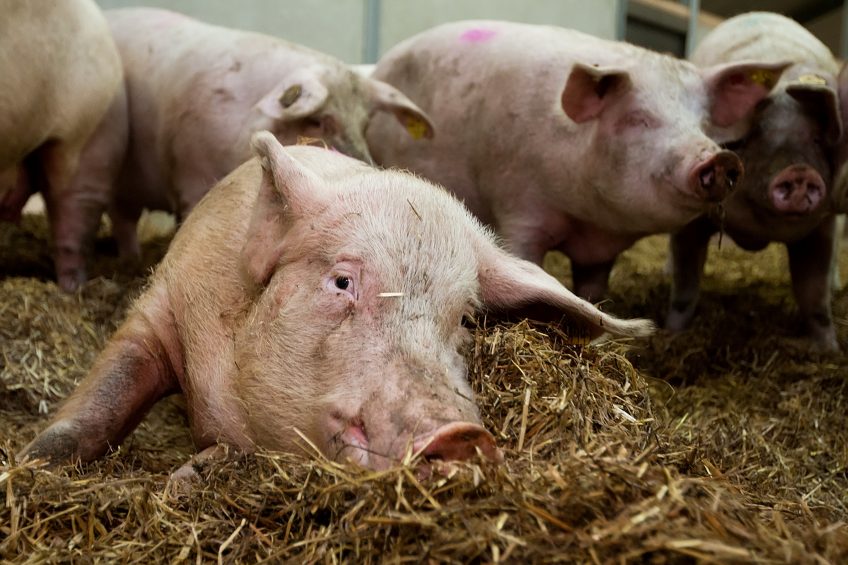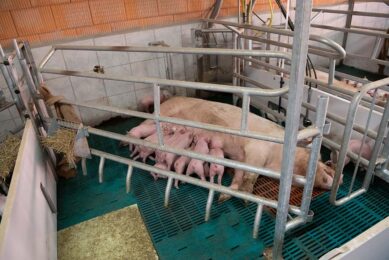Group housing systems and their influence on sows

Now that group housing for sows is fairly commonplace, a next question is: does it matter which type of group housing systems is applied? For sows, an enriched group housing system demonstrably makes a difference – for piglets that effect appears to be less prominent.
It’s been more than four years now since group housing for gestating sows has become mandatory in the EU. Ever since, developments have continued to happen. An increasing number of operations in the United States have also decided to move away from keeping the gestating sows in stalls. In addition, Danish research has continued to figure out whether sows can also be kept loose during lactation.
Interestingly, since many farms have now implemented a form of group housing during gestation, a growing dossier of knowledge has become available about major do’s and don’ts around loose housing. For instance, the opportunity to monitor a sow’s day-to-day habit in Electronic Sow Feeding systems has had as a positive side-effect in that a large amount of data has become available and that nothing remains unknown about a sow’s feeding pattern or water consumption. It also allows very targeted feeding curves.
Housing and welfare
The original reason to convert from sow stalls to gestation crates, however, was mainly welfare-driven. When kept in stalls, sows were not capable of stretching their legs during gestation. Experience over the years has led to the notion that sows in general are better prepared for parturition as they are in an improved physical shape and that sows usually are also calmer when kept in group housing.
Obviously, within group housing there is also a host of different options. At the French Institute for Agricultural Research (INRA), scientists have been wondering whether there’s a difference in effects on the sows (and their progeny) when they are kept in a basic group housing system or in an enriched group housing system.
Sow housing and stress
In a presentation by Elodie Merlot at the International Pig Veterinary Science (IPVS) Congress in Dublin, Ireland in June 2016, the influence of an enriched sow house on stress levels in sows was explained. In her presentation, she concluded that enriched group housing during gestation was indeed shown to be better for sow welfare when compared to keeping the sows in conventional group housing.
The research team reached this conclusion by initially focusing on a more general question – whether improved welfare during gestation would have a benefit in terms of piglet neonatal survival. In an experimental farm, they found greater neonatal mortality in piglets born from sows kept in conventional group housing after insemination compared to those born from mothers kept in enriched group housing. In order to find explanations to this observation, first the research team needed to establish whether there are differences in terms of health and welfare of mothers as well as in the passive immunity transferred to the piglets through colostrum, between sows housed in these two different environments during gestation.
The team of researchers kept successive batches of gestating sows in loose housing pens of 18-20 animals, in either conventional housing on slats, with on average 2.4 m2 per sow and in enriched housing with 3.4 m2 per sow and a deep straw bedding. They entered group housing at day 28 of gestation and were moved to conventional farrowing crates approximately ten days prior to farrowing (day 105).
The research team closely monitored 19 sows in the enriched environment and 18 sows in the conventional surroundings. The animals were observed for e.g. lameness and samples of blood, saliva, mammary secretions were collected on various moments.
To name a few findings, cortisol concentrations, a physiological indicator of stress, were found to be much lower in saliva from sows that were in enriched facilities, both at day 35 and day 105 of gestation.
In addition, at transfer to the farrowing crates, lameness was significantly more prevalent in sows in the conventionally kept herds than in those from the enriched herds (18% vs 2%). Granulocyte count and oxidative stress markers were also greater in conventionally kept sows.
It was concluded that in the enriched system, cortisol, lameness frequency, granulocyte counts and oxidative stress markers indicated that health and welfare of sows were greater.
As for the initial goal of the presentation: The differences during gestation did not affect the transfer of cellular and humoral immunity to the piglets via colostrum, but might have affected the transfer of cellular immune components in the milk afterwards.
Many of these conclusions came back in a published article in the peer-reviewed journal Animal Production Science* in August 2016.
Housing systems and gut microbiota
In a similar fashion, researchers at INRA were interested to figure out whether the type of loose sow housing during gestation might affect a sow’s gut microbiota – and how this indirectly might affect that of her offspring. In a publication in cooperation with the Czech Veterinary Research Institute and French animal nutrition company CCPA, a study was published in PLOS One*, in January 2017.
In that study, the team characterised faecal microbiota of sows kept during gestation in conventional pens with a slatted floor and in enriched pens with a floor covered with deep straw by sequencing the rRNA genes. In addition, after farrowing, microbiota of one-day-old and four-day-old piglets were monitored.
Microbiota of sows from the enriched system contained significantly more Prevotella, Parabacteroides, CF231, Phascolarctobacterium, Fibrobacter, Anaerovibrio and YRC22. The types of bacteria that occurred significantly less in the enriched system were Lactobacillus, Bulleidia, Lachnospira, Dorea, Ruminococcus and Oscillospira. In addition, the Firmicutes to Bacteroidetes ratio was 0.96 in the microbiota of sows kept in the enriched pens and this increased to 1.66 in the microbiota of sows kept in the conventional system. The scientists concluded that the production system influenced microbiota composition, most likely due the ingestion of the straw.
A parallel could be seen in the results here: there was a difference for the sows, but not so much for neonatal piglets. The microbiota of one- and four-day-old piglets differed from the microbiota of sows. In addition, the influence of maternal housing during gestation was marginal: Streptococcus was less frequent and Escherichia more abundant in microbiota of one-day-old piglets from sows housed in the enriched system. In those piglets, Veillonella and Pasteurella were less frequent in microbiota at four days of age. The scientists concluded that sows therefore did not represent the most important source for their colonisation in early days of life.
* The publication in Animal Production Science was written by E. Merlot and A. Prunier, INRA, France and C. Calvar, Chambre d’Agriculture de Bretagne, France. The article in PLOS One was written by T. Kubasova, L. Davidova-Gerzova, M. Medvecky, O. Polansky and I. Rychlik, Veterinary Research Insitute, Czech Republic; E. Merlot and H. Quesnel, INRA, France and D. Gardan-Salmon, CCPA, France.











